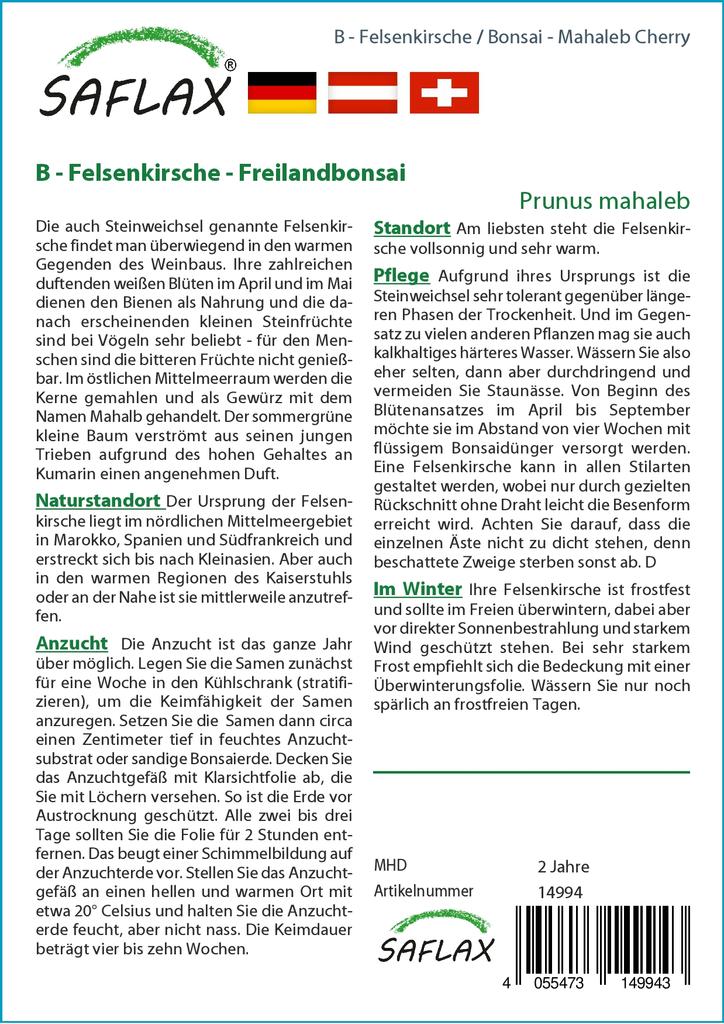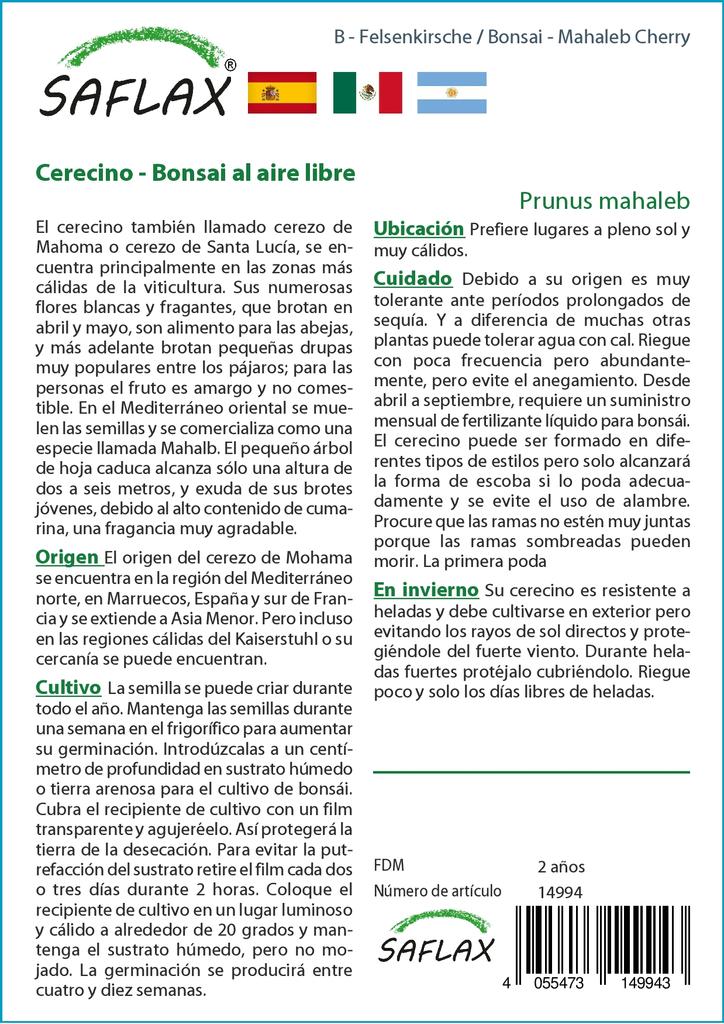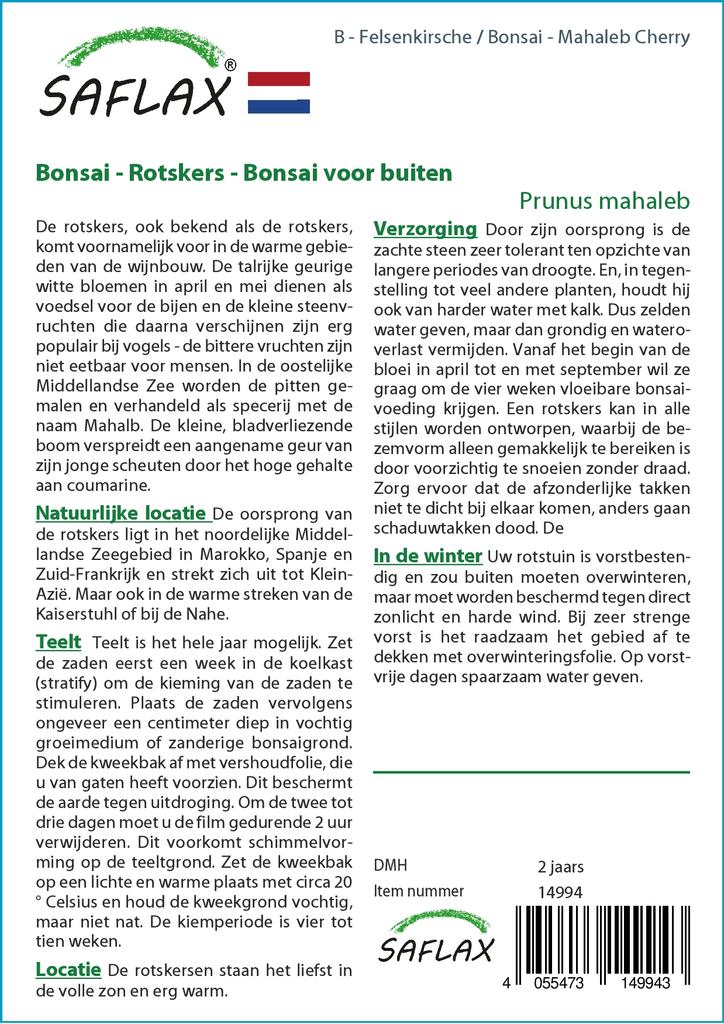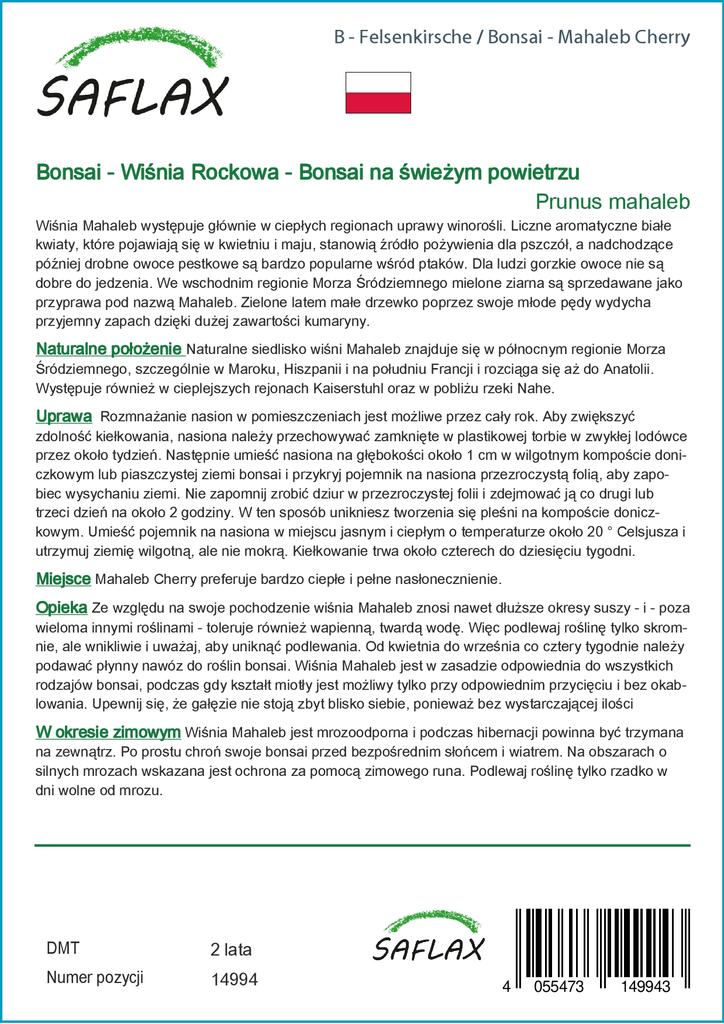Worth knowing:
The Mahaleb Cherry is mainly found in warm regions with wine-growing. Its numerous aromatic white flowers that show in April and May, provide a food source for bees, and the afterwards upcoming small stone fruits are very popular with birds. For humans, the bitter fruits are not good to eat. In the eastern Mediterranean region the ground kernels are sold as spice under the name Mahaleb. The summer-green small tree exhales through its young sprouts - due to its high coumarin content - a pleasant scent.
Natural Location:
The natural habitat of the Mahaleb Cherry is in the northern Mediterranean region, particularly in Morocco, Spain and the South of France and stretches until Anatolia. It can also be found in warmer areas of the Kaiserstuhl and close to the river Nahe.
Cultivation:
Seed propagation indoors is possible throughout the year. To increase the germinability, you should keep the seeds sealed in a plastic bag in the regular refrigerator for about a week. After that, plant the seeds about 1 cm deep into moist potting compost or sandy bonsai earth and cover the seed container with clear film to prevent the earth from drying out. Don’t forget to make some holes in the clear film and take it every second or third day completely off for about 2 hours. That way you avoid mold formation on your potting compost. Place the seed container somewhere bright and warm with a temperature around 20° Celsius and keep the earth moist, but not wet. The germination takes about four to ten weeks.
Place:
The Mahaleb Cherry prefers a very warm and full sunny place.
Care:
Due to its origins, the Mahaleb Cherry can endure even longer dry periods - and – other than many other plants – it also tolerates calcareous, hard water. So, water the plant only modestly, but penetratingly and see to avoid waterlogging. From April until September it should be given fluid fertilizer for bonsai plants every four weeks.
During the winter:
The Mahaleb Cherry is frost-hard and should be kept outdoors during hibernation. Just keep your bonsai sheltered from the direct sun and wind-protected. In areas with heavy frosts, some protection with a winter fleece is advisable. Water the plant only sparsely on frost-free days.
Picture credits:
- © © JP-bonsaijp58 - About © : Contact SAFLAX - http://www.saflax.de/copyright
- © Frank Laue - © Saflax - http://www.saflax.de/copyright
- © Frank Laue - © Saflax - http://www.saflax.de/copyright
- © Andrew Butko - GFDL - http://www.gnu.org/licenses/fdl
- © - . -
- © - -
- © - -
- © - -
- © - -







































